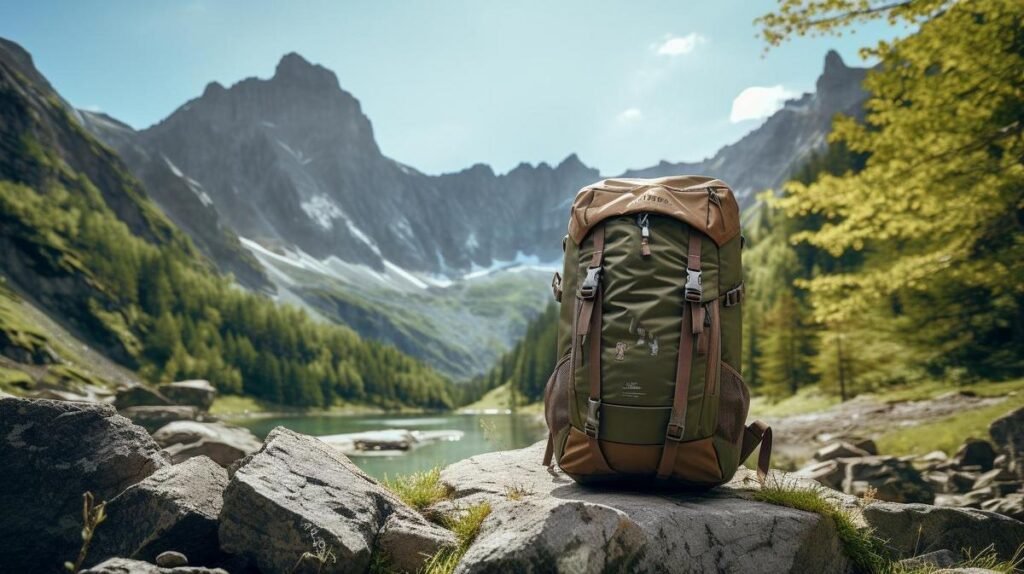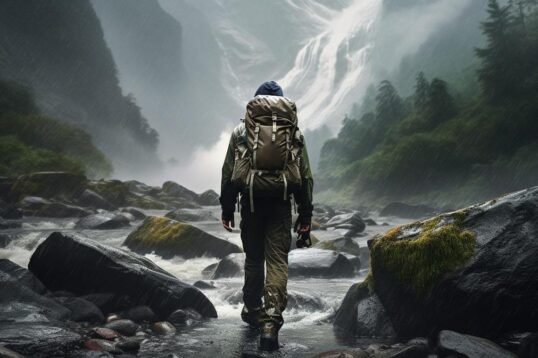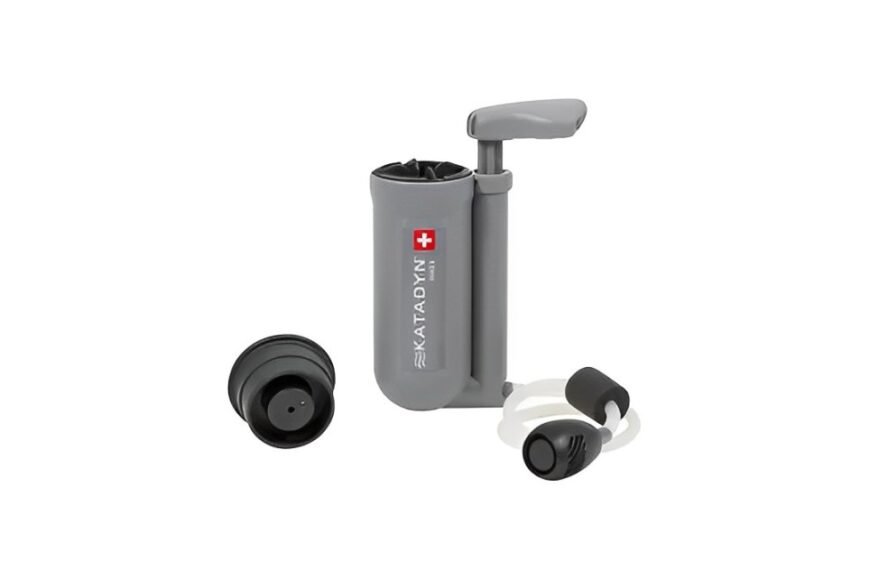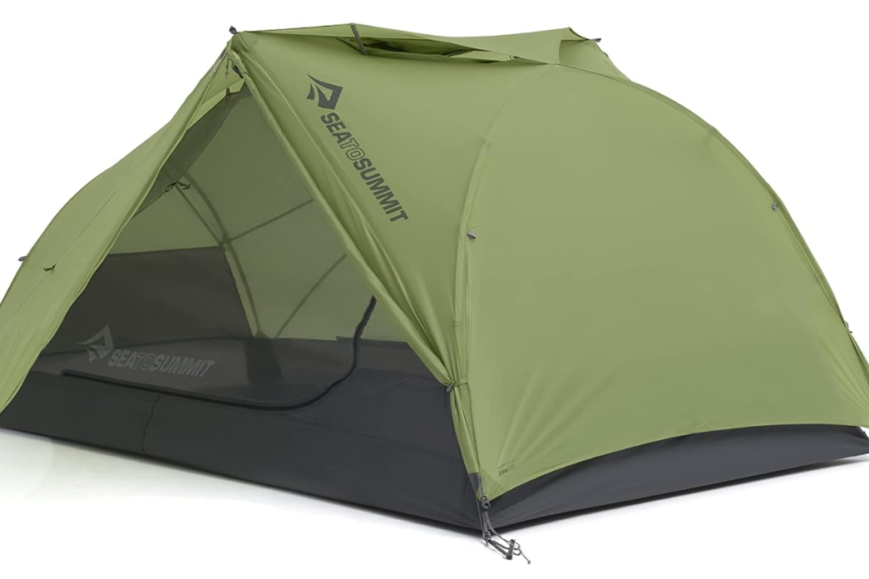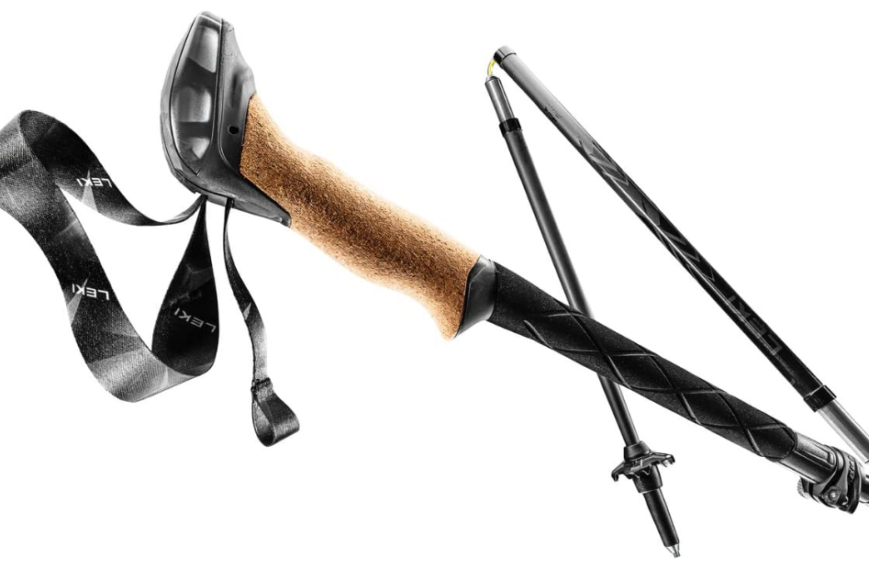- Best small hiking bags for day trips are lightweight, have compartments, whistle buckles, and hydration slots, and are comfortable.
- Women’s hiking backpacks should fit the female form with narrower straps and tailored hip belts.
- Durability relies on materials like ripstop nylon/polyester, strong seams, and quality zippers; consider waterproof vs. water-resistant based on the environment.
- Essentials for a waterproof hiking rucksack include sealed seams, a rain cover, durable zippers, and a water bladder space.
- Comfort in hiking daypacks comes from the right fit, breathability, and weight distribution via hip belts, back support, and adjustable straps.
- Capacity for hiking backpacks: 20-30 liters for day trips, 30-50 liters for weekend hikes, and 50-70 liters for multi-day treks, with an emphasis on carrying only what’s necessary.
To enjoy day hiking, you need the right gear, starting with your backpack. But what makes a bag fit for a day’s adventure? Let’s sort it out. We want packs that are light and comfy. They’ve got to hold your stuff but stay compact. Safety is key, so we love those whistle buckles. Stay with me as we break down the must-haves for your next day-trip pack!
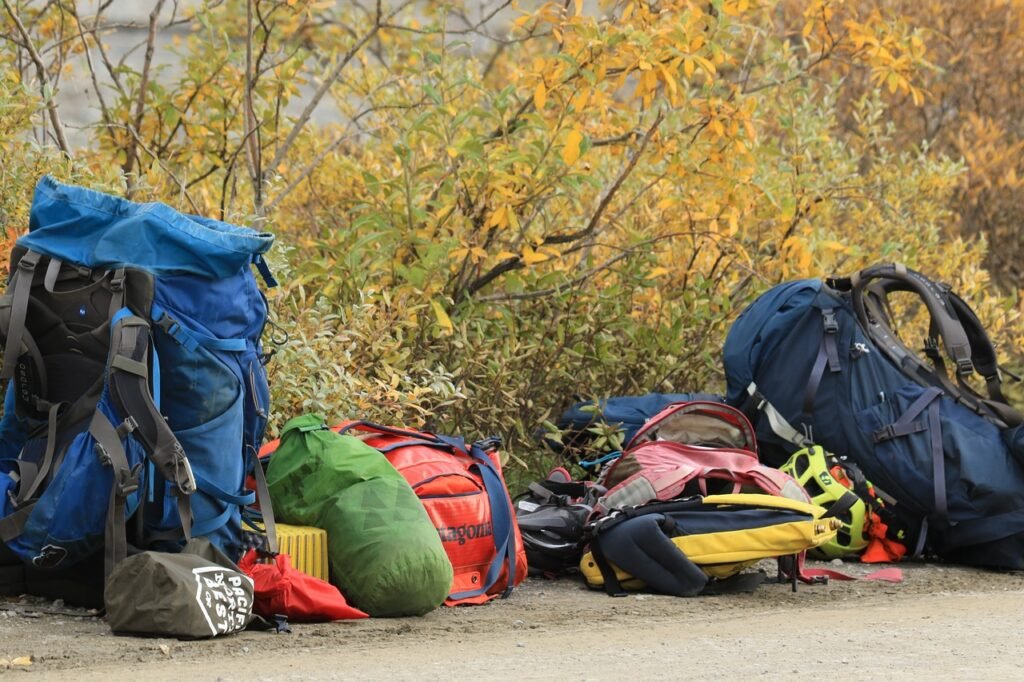
What Features Define the Best Small Hiking Bags for Day Trips?
What makes a hiking daypack ideal for short trips? Look for a lightweight, compact, and comfy design. A lightweight walking backpack won’t drag you down. Pack weight matters as every ounce counts.
Are there specific features to look for in small hiking bags? Yes, think compartments, whistle buckles, and hydration slots. For safety, daypacks with whistle buckles help. They alert others if you need help. Compartments keep gear in place, aiding balance and reach.
Best small hiking bags for day trips have space for food, water, and a first-aid kit. Plus, there should be room for a map and a light jacket. Look for a pack that feels right on your back. It should be snug against your body. This means no sagging or bouncing.
For hydration, some bags have built-in bladders. This lets you drink without stopping. Others have pockets to hold water bottles. Make sure your bag can hold enough water for your trip.
Some of the best small hiking bag brands focus on comfort and fit. Straps should not dig into your shoulders. A hip belt can help spread the load. This eases the strain on your back.
Compact travel hiking backpacks also matter. You want your bag to take up little room. This is key when you’re not using it.
To sum it up, pick a bag fit for your frame, equipment, and trip length. Remember to check the fit, even if it looks right on paper. A good fit helps prevent pain later. Choose wisely, and happy hiking!
How to Select the Right Hiking Backpack for Women?
What should be considered when purchasing a hiking backpack for women? Look for a fit suited to a woman’s frame. Selecting hiking packs for women demands special attention to ergonomic design. This ensures the bag suits the unique shape of a woman’s body. Women-specific hiking backpacks often have narrower shoulder straps. Their hip belts and back panels fit the female form better than unisex models.
Ergonomics vary notably from unisex models. Men’s and women’s bodies differ in torso length and shoulder width. Women’s packs cater to these differences to prevent discomfort and strain. Adjusting your hiking backpack for a woman’s frame can involve altering straps and load distribution points. This is key for a snug, secure feel that doesn’t hamper movement or cause injury.
Some rucksacks offer more adjustability than others. It pays to compare various women-specific models. Adjust the straps to see how well it can be tailored to your build. Look for user-friendly adjustment controls for easy fine-tuning on the go.
When testing fit and comfort, wear the pack as you would on a hike. Fill it slightly to check how weight sits on your shoulders and hips. Reflect on customer reviews to gauge the real-world performance of women’s backpacks. These insights can tip the scales in favor of one pack over another.
Remember, a correctly fitting backpack does more than just carry your gear. It boosts your hiking enjoyment by protecting your back and shoulders from undue stress.

Understanding Hiking Backpack Durability and Material Quality
How can you assess the durability of a hiking backpack? Look for tough fabric and strong seams. Nylon and polyester are top choices for longevity and weather resistance. They hold up well against wear and tear. Both materials can get a coating to become more water-resistant.
When evaluating backpacks, check the weight-to-durability ratio. A tough, light pack often uses ripstop fabric. It weaves reinforcement threads at intervals. This stops small rips from growing. Ripstop nylon offers a balance of strength and lightness, ideal for day trips.
What about facing the rain or a rogue splash? You have two choices: waterproof or water-resistant. Waterproof packs use materials that block water entirely. These are good for heavy rain but can feel bulkier. Water-resistant packs repel water to an extent. They are lighter and more flexible for light rain or quick showers.
Quality matters a lot. Strong fabric, heavy-duty zippers, and tight seams mean a pack lasts long. Paying a bit more upfront for a durable bag saves money over time. You also want your things safe and dry, whatever the weather has planned.
Now, there’s talk of eco-friendly hiking backpacks too. They affect our planet less. Some use recycled materials. Others do away with harmful dyes and chemicals. They are sturdy, caring for both your gear and nature.
To sum up, picking a durable backpack means checking materials and build. Ripstop nylon ranks high for light, strong bags. Choose waterproofing based on your adventure type. Remember, a well-made, eco-friendly pack is kind to your back and the earth.
What Essentials Should Your Waterproof Hiking Rucksack Have?
What features are essential in a waterproof hiking rucksack? You need seams that seal shut, a hardy rain cover, durable zippers that resist water, and space for a water bladder. These parts work together to keep your belongings dry.
First, let’s talk rain. A waterproof hiking rucksack must have sealed seams. This means water can’t sneak in where fabrics join. Yes, like the secret agents of bags, these seams keep the inside of your pack safe from moisture sneaking in. Look for this detail: it’s a deal breaker.
Next up, a rain cover. Even with a waterproof bag, you need an extra shield from heavy downpours. This light cover slips over your bag and adds backup against leaks. Imagine it as a raincoat for your backpack – simple but key for dry gear.
Zippers matter too. Zipper strength is a big deal for weatherproofing. Weak zippers fail, but strong ones keep water out. Think of these zippers as mini gatekeepers, holding back a flood that wants to soak your snacks.
Now, hydration. Packing a hydration bladder can up your hiking game. It lets you drink on the go and saves space. Your bag must have a special pocket for this. It’s like having a secret fridge on your back – always cool and handy.
Every detail counts when you’re miles from home in the wild. Your waterproof hiking rucksack must stand up to storms, surges, and splashes. Get these essentials right, and you’ll laugh in the face of rain!

Maximizing Comfort: How to Achieve Hiking Daypack Comfort?
What are the key factors that contribute to a comfortable hiking daypack? Fit, breathability, and smart weight distribution are key. A comfy daypack means less strain and more fun on trails. Now, let’s dig into how to nail that comfort.
First, get the fit right. Daypacks come in various sizes. Choose one that fits your back length. Look for adjustable straps. They help tailor the fit to your body. This can prevent pain and make carrying loads easier.
For back panels, go for breathable hiking packs. Why? They allow air to move. This keeps you cool and dry. A wet back equals discomfort. Breathable materials solve this.
Hip belts are next. They aren’t just for show. They take the weight off your shoulders. This means your hips carry more. That’s good. Hips are stronger than shoulders. You can walk longer and feel better.
What about back support in trekking backpacks? It’s crucial. Today’s packs may have frames or pads that support the back. They make sure the pack doesn’t sag. A saggy pack pulls you backward. Not comfy.
Lastly, adjustments matter. Each hike is unique, like you. Sometimes you need the pack tight to your body. Other times, loose is better. Being able to adjust on the go is a game-changer.
So, for that, next day trip, remember: a good fit, breathable material, savvy use of hip belts, solid back support, and flexible adjustments set you up for a happy back and a joyful hike.
Choosing the Right Capacity: How Big Should My Hiking Backpack Be?
How do I determine the right capacity for my hiking needs? Your hike length dictates the backpack size. For day hikes, look for a pack that holds about 20-30 liters. This should be enough for food, water, and a first aid kit. If you plan to hike for a weekend, you might need a pack with 30-50 liters to fit extra clothes and gear. For multi-day trips, a pack of 50-70 liters works. It can hold all you need for several days.
Deciding on backpack volume based on your hiking itinerary is smart. A heavy load hurts your back. A small one might not fit all you need. For a day trip, choose a backpack that feels good when packed with your gear. Try walking around with it loaded. If you can move easily and feel good, it’s right for you.
Understanding the relationship between backpack volume and weight helps too. More space can mean you pack more than you need. A full, big backpack is often heavier and makes hikes hard. A light pack lets you hike further with less pain.
Guidelines for packing a backpack for weekend hikes suggest you should bring what you need and nothing more. Lay out all your gear before you pack. This way, you see everything. Then, only take what’s needed. Food, shelter, water, and safety items are musts. Leave behind that third extra pair of socks.
When reviewing the key features of multi-day hiking backpacks, check for a good fit. Make sure it’s snug but comfy. Look for a bag with different pockets to split up your gear. Also, choose a pack with a frame. It helps keep the weight even on your hips, not your shoulders.
Assessing the pros and cons of larger vs. smaller pack capacities for varying trip lengths is key. A bigger pack offers more space but may tempt you to overpack. A smaller one is less to carry but might not hold all you need. When in doubt, go for a light pack. It makes your hike more fun and easier on your body.
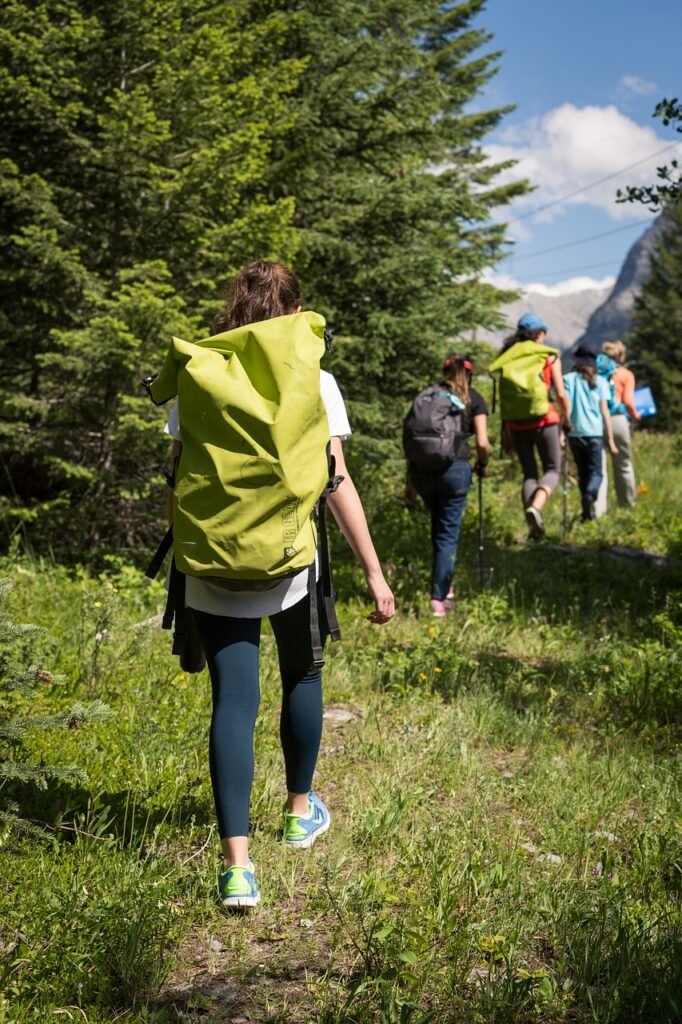
Conclusion
In this blog, we covered every angle to help you choose great hiking gear. From the light build of small daypacks to women-specific designs, and the tough materials for any weather, we’ve got you covered. Don’t forget about snug fits and smart storage. Remember, the right bag can make your outdoor adventures safer and more fun. Now get out there and explore with confidence!
![]()

